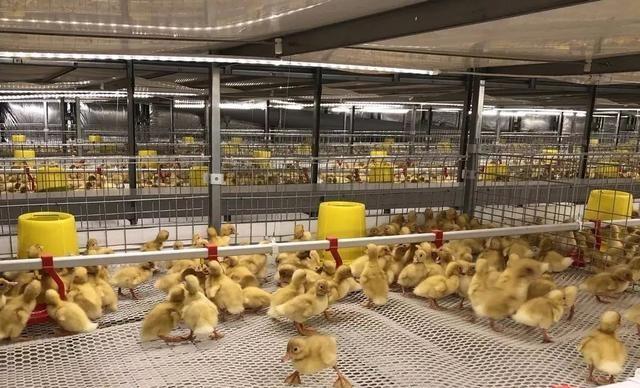Breeding ducks is also risky, especially when ducks have infectious diseases, it is more likely to lead to large-scale death, think of duck viral hepatitis, which is an acute relief infectious disease, so how should it be treated?

Pictured: Ducks
Popular features
It is mainly the onset of ducks within 3 weeks of age, the incidence rate can reach 100%, the mortality rate of ducks within 7 days of age is as high as 85 to 90%, and the mortality rate of 7 to 21 days old is about 50%. It also occurs at 4 to 6 weeks of age, but morbidity and mortality are low.
Clinical symptoms
Sick ducks shrink their necks and wings, cyanosis of their flippers, increased body temperature, diarrhea, difficulty walking, and before death, they are manifested as bending their necks, kicking back with their feet, and falling to the ground. The time from onset to death is about 24 hours. The head of the dead duck is bent back, the feet are extended backwards, and the angle arch is a typical feature of death from this disease.
Precautions
1. Breeding ducks are vaccinated with live duck viral hepatitis vaccine within 1 month before the birth, and the immunization is strengthened once every 15 to 20 days, so that the offspring chicks can be protected by maternal antibodies.
2. 1 to 7 day old ducks are injected with live duck viral hepatitis vaccine, enrofloxacin has a good protective effect.
Treatment
When the duck population begins to develop disease, 2% astragalus polysaccharide + plate blue root + biological factor or enrofloxacin + inosine + atp synergist can be used, mixed with intramuscular injection, and the severe patient is doubled or repeated once after 24 hours. Drink water with 10% ampramycin + bioactives at the same time or mix with blast grams (add 100 grams per 100 kg of feed), 2 times a day for 3 days. The dose is doubled in severe cases. It can also be taken orally for avian disease elimination, 1 dose, 0.1 to 0.2 grams per kilogram of body weight (that is, 100 kilograms of 100 grams of mixture), 2 times a day, for 3 to 4 days.
In addition, after the onset of the disease, the enclosure and feeding cage need to be thoroughly disinfected and the house is empty for more than 15 days. Ducks over 10 days old are prone to secondary duck infectious serositis or E. coli, which is used with pulpitis kang during treatment.
If the breeding of ducks must be timely prevention of disease so that there will be no greater problems, in the breeding time to observe frequently, when the problem is found, it must be observed that this time will not produce greater problems.